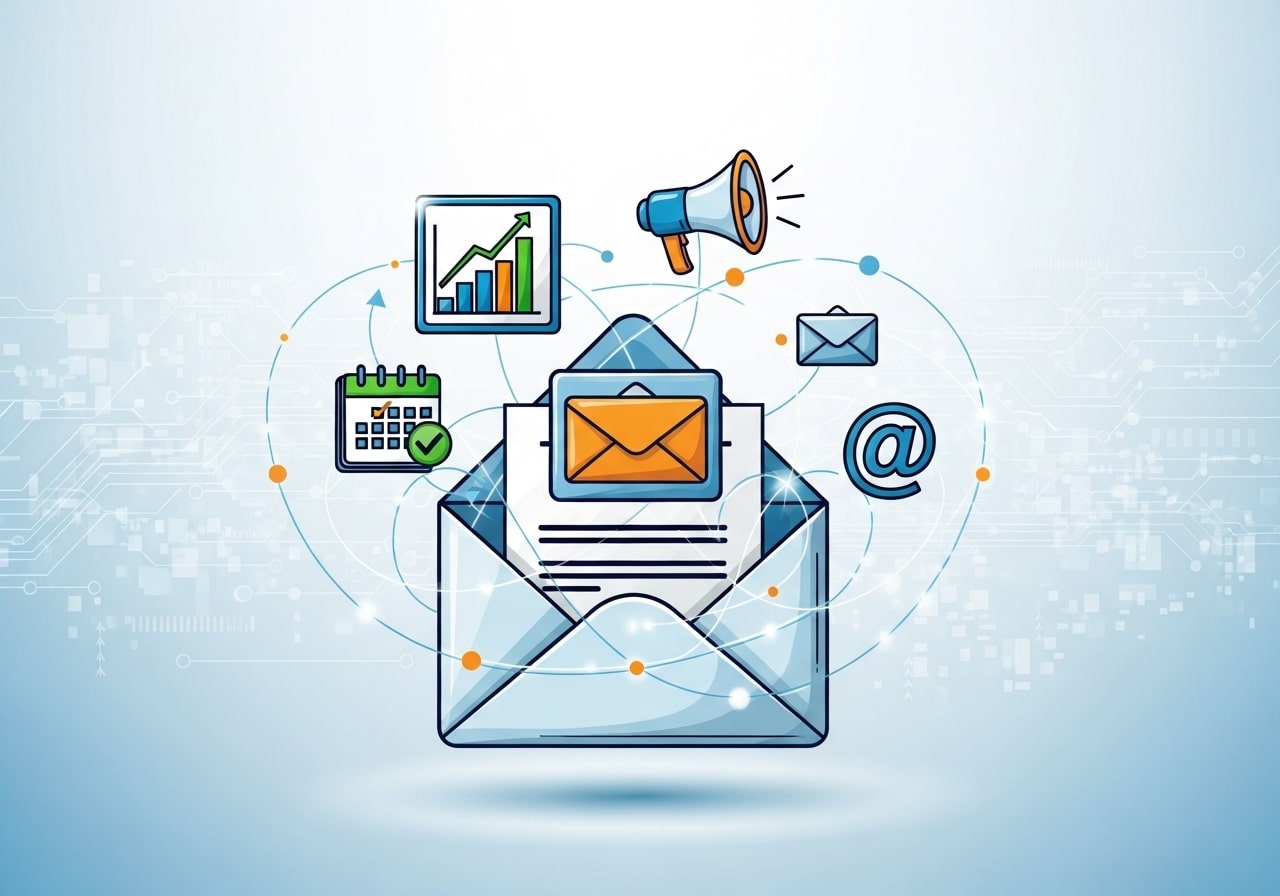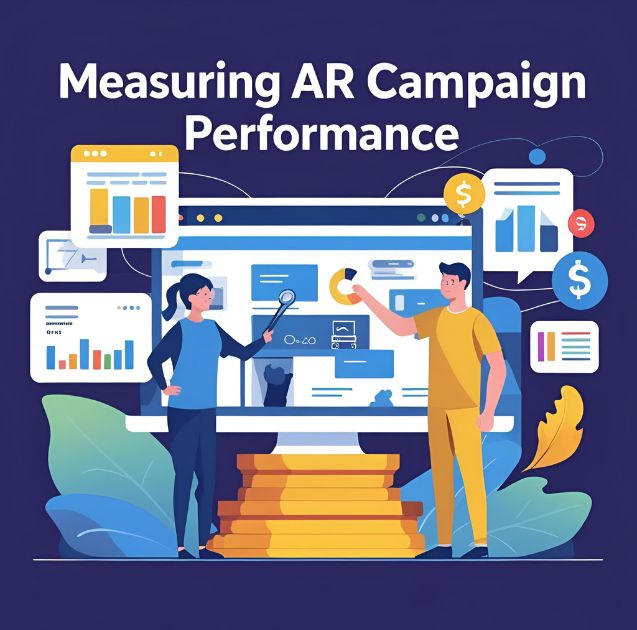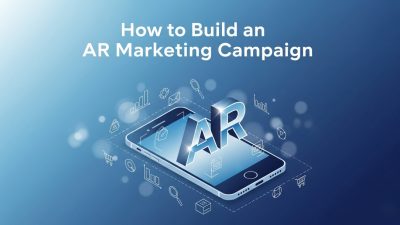Augmented reality is transforming email marketing by turning static messages into interactive experiences. Through WebAR and QR-based activation, brands can boost engagement, improve product visualization, increase conversions, and stand out in crowded inboxes—delivering real value while creating memorable, immersive customer interactions that strengthen relationships and drive measurable business growth.
Email marketing has evolved far beyond simple text and images. While most marketers are still relying on traditional formats, forward-thinking brands are experimenting with augmented reality (AR) to create immersive experiences that capture attention and drive engagement.
Augmented reality in email marketing allows subscribers to interact with digital content overlaid onto their real-world environment, directly from their inbox. This technology transforms static email campaigns into dynamic, interactive experiences that can showcase products, tell stories, and create memorable brand moments.
The potential is significant. AR can help solve common email marketing challenges like declining open rates, banner blindness, and the difficulty of demonstrating product value through static images alone. By incorporating AR elements, marketers can create campaigns that stand out in crowded inboxes and provide genuine value to subscribers.
This guide will walk you through practical strategies for implementing AR in your email campaigns, from simple interactive elements to sophisticated product demonstrations that can transform how customers experience your brand.
Why Augmented Reality Works in Email Marketing

Traditional email marketing faces several limitations. Static images can’t fully convey how products look, feel, or function in real life. Text descriptions, no matter how compelling, leave room for interpretation. Video content, while engaging, requires recipients to passively consume information rather than actively participate.
Augmented reality addresses these challenges by enabling interactive experiences. Subscribers can visualize furniture in their homes, try on accessories virtually, or explore product features in three dimensions. This hands-on approach builds confidence in purchasing decisions and creates stronger emotional connections with brands.
The technology also taps into the novelty factor. AR experiences in email are still relatively rare, making them more likely to capture attention and generate word-of-mouth marketing. Recipients often share innovative AR experiences with friends and colleagues, extending your campaign’s reach organically.
Most importantly, AR provides measurable value to subscribers. Rather than simply promoting products, AR-enabled emails offer utility—helping customers make better decisions, visualize possibilities, or solve problems in their own environment.
Types of AR Experiences for Email Campaigns

Product Visualization
The most straightforward application of AR in email marketing is product visualization. Fashion brands can enable virtual try-ons directly from promotional emails. Furniture retailers can let subscribers place sofas, tables, or decorations in their actual living spaces. Beauty brands can offer virtual makeup application or hair color testing.
These experiences work particularly well for products where fit, scale, or appearance are crucial factors in the buying decision. Instead of guessing whether a jacket will look good or whether a bookshelf will fit in a specific corner, subscribers can see for themselves before making a purchase.
Interactive Product Demos
Complex products benefit from interactive demonstrations that AR makes possible. Technology companies can create 3D models that subscribers can rotate, zoom into, and explore. Automotive brands can offer virtual test drives or detailed explorations of vehicle interiors and features.
These demos are especially valuable for B2B marketers selling equipment, software interfaces, or technical products that are difficult to understand through traditional marketing materials.
Branded Games and Experiences
Entertainment-focused AR experiences can build brand awareness and engagement without directly promoting products. Retailers might create AR scavenger hunts, puzzles, or mini-games that reinforce brand messaging while providing entertainment value.
These experiences work well for brand awareness campaigns, holiday promotions, or engaging younger demographics who expect interactive digital experiences.
Educational Content
AR can make educational content more engaging and memorable. Real estate agents can offer virtual property tours, cooking brands can provide interactive recipe demonstrations, or financial services companies can create visual explanations of complex concepts.
Educational AR experiences position brands as helpful resources while demonstrating expertise in their respective fields.
Technical Implementation Strategies
WebAR Integration
Web-based augmented reality (WebAR) is the most accessible option for email campaigns. This approach works through web browsers without requiring subscribers to download dedicated apps. When recipients click AR-enabled content in emails, they’re directed to web pages that activate their device’s camera and overlay digital content.
WebAR works across most modern smartphones and tablets, making it broadly compatible with your subscriber base. The technology leverages existing web standards and can be implemented using JavaScript libraries like AR.js or 8th Wall.
QR Code Activation
QR codes provide a simple bridge between email content and AR experiences. Subscribers scan codes with their smartphone cameras, which then launch AR applications or web-based experiences. This method works well because QR code scanning is now built into most phone cameras.
The key is making the value proposition clear. Include brief instructions and explain what subscribers will gain by scanning the code. Consider offering exclusive content, discounts, or early access to encourage participation.
Progressive Enhancement
Not all subscribers will have AR-capable devices or be comfortable with new technology. Design campaigns that provide value regardless of AR participation. Include traditional images, videos, or text content alongside AR options, allowing subscribers to choose their preferred experience level.
This approach ensures your campaign reaches your entire audience while giving tech-forward subscribers additional interactive options.
Cross-Platform Compatibility
Test AR experiences across different devices, operating systems, and email clients. Some features may work better on iOS versus Android, or perform differently in Gmail versus Outlook. Plan for these variations and provide alternative experiences when necessary.
Consider creating device-specific content or offering different AR experiences optimized for various platforms to maximize engagement across your subscriber base.
Creating Compelling AR Email Content
Clear Value Communication
Make the benefits of AR interaction immediately obvious. Use subject lines and preview text that communicate the interactive nature of your email. Include screenshots or GIFs showing what the AR experience looks like to set proper expectations.
Avoid technical jargon. Focus on outcomes rather than technology. Instead of “Experience our new AR feature,” try “See how this sofa looks in your living room” or “Try on these sunglasses virtually.”
Intuitive User Experience
Design AR experiences that feel natural and intuitive. Include clear instructions, but keep them brief. Most users should be able to understand how to interact with AR content within seconds of launching it.
Provide visual cues like arrows, highlights, or animations to guide user interaction. Consider including brief tutorial videos or step-by-step guides for more complex experiences.
Mobile-First Design
Since most email is consumed on mobile devices, design AR experiences specifically for smartphones and tablets. Ensure text is readable on small screens, buttons are large enough for touch interaction, and loading times are optimized for mobile data connections.
Test your AR content on actual mobile devices rather than desktop simulators to identify real-world usability issues.
Compelling Call-to-Action
Create clear pathways from AR experiences to desired actions. Whether you want subscribers to make purchases, visit stores, or share content, make next steps obvious and easy to complete.
Consider offering AR-exclusive incentives like special discounts or early access to encourage participation and reward subscribers who engage with interactive content.
Measuring AR Campaign Performance

Engagement Metrics
Track traditional email metrics alongside AR-specific data points. Monitor open rates, click-through rates, and conversion rates, but also measure AR activation rates, interaction duration, and feature usage within AR experiences.
These metrics help you understand which subscribers are most interested in interactive content and which AR features generate the strongest engagement.
Conversion Tracking
Implement conversion tracking that connects AR interactions to business outcomes. Track whether subscribers who engage with AR content have higher purchase rates, larger average order values, or increased brand loyalty compared to those who don’t interact with AR elements.
This data helps justify AR investment and guides future campaign development.
User Feedback Collection
Gather qualitative feedback about AR experiences through surveys, social media monitoring, or direct customer feedback. Understanding how subscribers perceive AR content helps improve future campaigns and identify technical issues that metrics might not reveal.
Pay attention to common user complaints or suggestions, as these insights can guide technical improvements and content strategy adjustments.
A/B Testing Framework
Test AR elements systematically by comparing AR-enabled emails against traditional versions. Experiment with different AR content types, activation methods, and user interface designs to identify what resonates most with your specific audience.
Consider testing AR campaigns with subscriber segments based on demographics, purchase history, or technology adoption patterns to identify which groups respond most positively to interactive content.
Getting Started with Your First AR Campaign
Begin with simple, low-risk AR implementations before investing in complex experiences. Choose products or services that benefit clearly from visualization or interaction. Focus on solving specific customer problems rather than showcasing technology for its own sake.
Partner with AR development specialists if you lack internal technical expertise. Many agencies and freelancers specialize in email marketing AR and can help create professional experiences without requiring extensive technical knowledge from your team.
Start with small subscriber segments to test AR campaigns before rolling them out to your entire list. This approach allows you to identify and resolve technical issues while gathering feedback from engaged, tech-forward subscribers.
Document what works and what doesn’t. AR in email marketing is still evolving rapidly, so maintaining detailed records of campaign performance, subscriber feedback, and technical challenges will inform your long-term strategy.
The Future of Interactive Email Marketing

Augmented reality represents just one element of email marketing’s evolution toward more interactive, personalized experiences. As AR technology becomes more accessible and email clients improve support for rich media, these experiences will likely become standard rather than experimental.
Smart marketers who begin experimenting with AR now will develop expertise and subscriber comfort that provides competitive advantages as the technology matures. The key is balancing innovation with practicality, ensuring that AR enhances rather than complicates the subscriber experience.
Success with AR email marketing requires understanding your audience, choosing appropriate use cases, and maintaining focus on delivering genuine value. When implemented thoughtfully, augmented reality can transform email from a broadcast medium into an interactive platform that strengthens customer relationships and drives meaningful business results.
FAQ: Augmented Reality (AR) in Email Marketing
1. What is augmented reality in email marketing?
AR in email marketing allows subscribers to interact with digital content—such as 3D products or virtual try-ons—through links, QR codes, or WebAR experiences launched from an email.
2. Do users need a special app to view AR content from emails?
Not always. Most campaigns use WebAR, which works directly in mobile browsers without requiring users to download a separate app.
3. What types of brands benefit most from AR email campaigns?
Retail, fashion, furniture, beauty, real estate, automotive, and technology brands benefit most—especially where visualization, fit, or product complexity influences purchase decisions.
4. Can AR emails improve engagement and conversions?
Yes. AR experiences often increase click-through rates, time spent with content, purchase confidence, and conversion rates by making emails more interactive and useful.
5. Is AR compatible with all email clients?
AR does not run directly inside email clients. Emails act as a gateway, directing users to web-based AR experiences that work across most modern smartphones and browsers.
6. How expensive is it to implement AR in email marketing?
Costs vary. Simple WebAR or QR-based experiences can be affordable, while advanced 3D or interactive demos require higher investment. Starting small is recommended.
7. How do you measure the success of AR email campaigns?
Track traditional metrics (opens, clicks, conversions) along with AR-specific data like activation rate, interaction time, and post-AR purchase behavior.
8. Will AR emails work for all audiences?
Not equally. Tech-savvy and younger audiences tend to engage more. Using progressive enhancement ensures all subscribers still receive value even without AR interaction.
9. Are AR email campaigns secure and privacy-friendly?
Yes, if implemented correctly. Brands should clearly disclose data usage, follow privacy regulations, and avoid collecting unnecessary personal data.
10. How should marketers get started with AR in email marketing?
Begin with a simple use case, test with a small audience segment, focus on clear value, and iterate based on performance data and user feedback.





